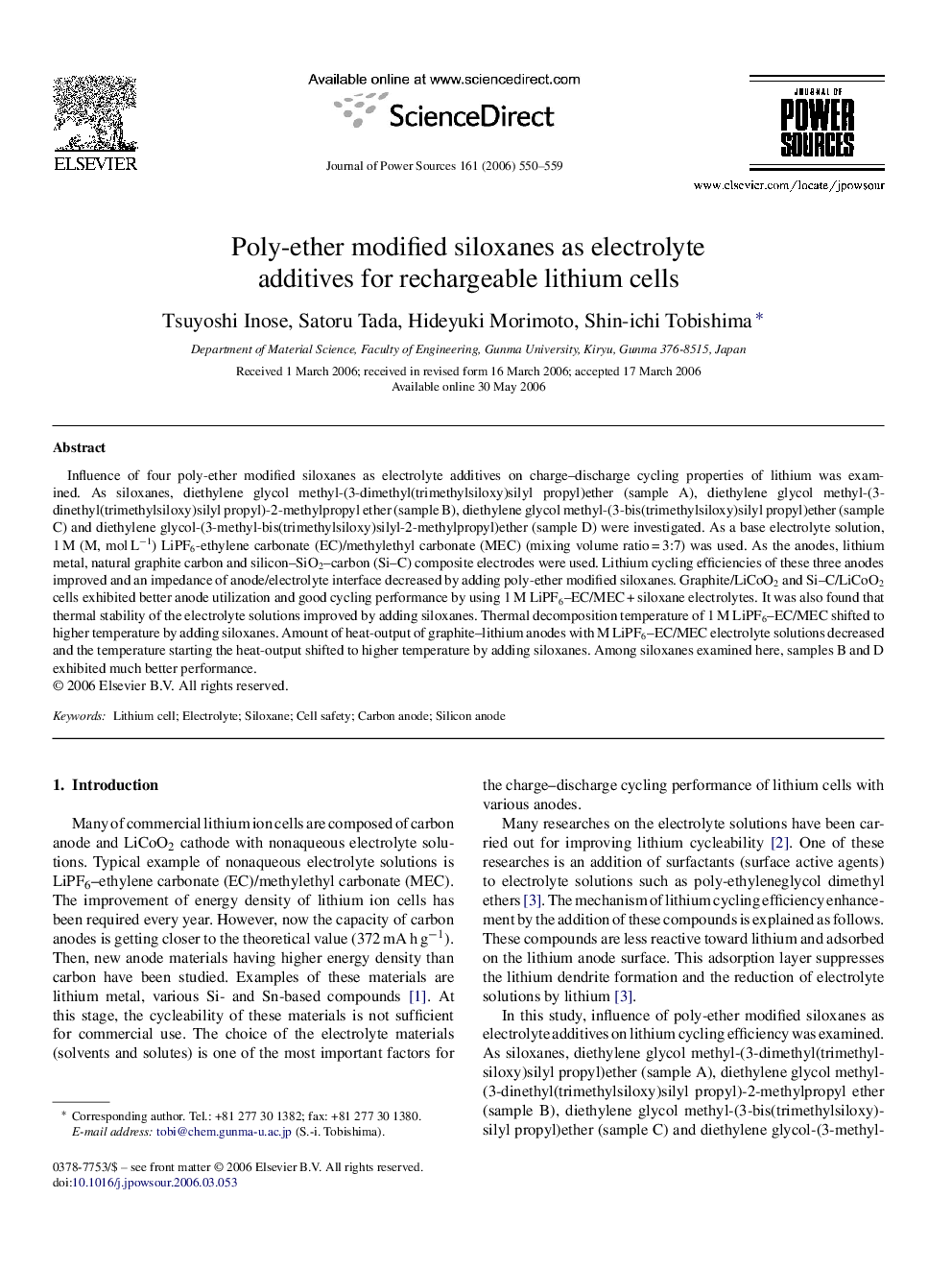| Article ID | Journal | Published Year | Pages | File Type |
|---|---|---|---|---|
| 1287031 | Journal of Power Sources | 2006 | 10 Pages |
Influence of four poly-ether modified siloxanes as electrolyte additives on charge–discharge cycling properties of lithium was examined. As siloxanes, diethylene glycol methyl-(3-dimethyl(trimethylsiloxy)silyl propyl)ether (sample A), diethylene glycol methyl-(3-dinethyl(trimethylsiloxy)silyl propyl)-2-methylpropyl ether (sample B), diethylene glycol methyl-(3-bis(trimethylsiloxy)silyl propyl)ether (sample C) and diethylene glycol-(3-methyl-bis(trimethylsiloxy)silyl-2-methylpropyl)ether (sample D) were investigated. As a base electrolyte solution, 1 M (M, mol L−1) LiPF6-ethylene carbonate (EC)/methylethyl carbonate (MEC) (mixing volume ratio = 3:7) was used. As the anodes, lithium metal, natural graphite carbon and silicon–SiO2–carbon (Si–C) composite electrodes were used. Lithium cycling efficiencies of these three anodes improved and an impedance of anode/electrolyte interface decreased by adding poly-ether modified siloxanes. Graphite/LiCoO2 and Si–C/LiCoO2 cells exhibited better anode utilization and good cycling performance by using 1 M LiPF6–EC/MEC + siloxane electrolytes. It was also found that thermal stability of the electrolyte solutions improved by adding siloxanes. Thermal decomposition temperature of 1 M LiPF6–EC/MEC shifted to higher temperature by adding siloxanes. Amount of heat-output of graphite–lithium anodes with M LiPF6–EC/MEC electrolyte solutions decreased and the temperature starting the heat-output shifted to higher temperature by adding siloxanes. Among siloxanes examined here, samples B and D exhibited much better performance.
